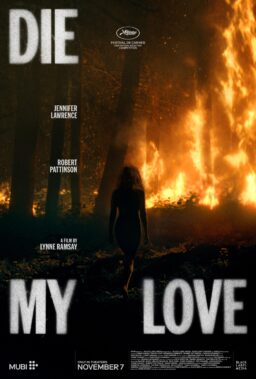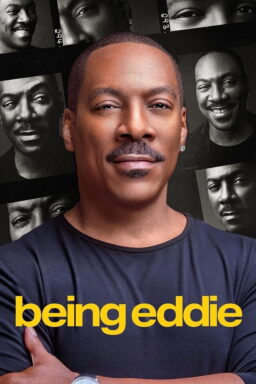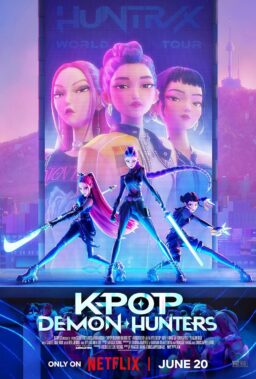I have seen the future of the cinema, and it is not digital. No matter what you’ve read, the movie theater of the future will not use digital video projectors, and it will not beam the signal down from satellites. It will use film, and the film will be right there in the theater with you.
How can this be? How can a technology that is a century old possibly be preferable to new digital gizmos? This is a story of the limitations of video projection, and the hidden resources of light-through-celluloid. Please read carefully. The future of traditional cinema is at stake.
In recent months the Wall Street Journal, New York Times and Los Angeles Times have carried breathless reports that Hollywood is on the brink of a digital revolution. Even Wired magazine, usually informed on technical matters, printed the howler that digital projection is “far better” than film. George Lucas and Texas Instruments have teamed up to showcase “Star Wars — Episode I: The Phantom Menace” with digital projection in theaters on both coasts. Disney is now preparing digital theatrical demos; its “Bicentennial Man” will open in digital Friday in a few theaters.
These custom installations, we are told, are the first wave of a technological revolution that will overtake movie theaters. No longer will an underpaid projectionist struggle in the booth with ungainly cans of film. New movies will zip down from space and be projected into the screen with startling clarity. Digital video projection (jargon watch: “dijection”) is being embraced by Hollywood, we read, because it will save the studios the cost of manufacturing and shipping prints all over the world.
But how good is digital projection? I saw it demonstrated in May at the Cannes Film Festival, and have read reports of those who’ve attended the custom “Phantom Menace” installations. A system offered by Hughes is not very persuasive, the witnesses say, but the Texas Instruments system is better; reviews range from “85 percent as good as a real movie” to “about as good.” The special effects in “Phantom Menace” looked especially sharp, viewers said, and there’s a reason: They were computer-generated in the first place, so they arrived at the screen without stepping down a generation to film. And because they depicted imaginary places, it was impossible to judge them on the basis of how we know the real world looks.
“Dijection” offers a wonderful new prospect, if it’s for real. But it’s not the only possible future. Far from the boardrooms of Texas Instruments, which has unlimited financial resources and wants to grab the world movie distribution market, there is an alternative film-based projection system that is much cheaper than digital, uses existing technology and (hold onto your hats) is not “about as good” as existing film, but, its inventors claim, 500 percent better. That is not a misprint.
This system is called MaxiVision48. I have seen it demonstrated. It produces a picture so breathtakingly clear it is like 3-D in reverse: like looking through an open window into the real world. Motion is shown without the jumpiness and blurring of existing film projection, details are sharper, and our eyes are bathed in visual persuasion.
The inventor of MaxiVision is a Hollywood film editor named Dean Goodhill (he shared an Oscar nomination for “The Fugitive“). One of his partners is a manufacturer named Ty Safreno, whose company, Trust Automation of San Luis Obispo, Calif., builds digital robotics systems for tasks that must be vibration free, like the manufacture of Pentium chips. Another associate is Optical Research of Pasadena, Calif.; it makese Panavision lenses and has designed the MaxiVision lenses.
Without getting into labyrinthine technical explanations, here is how MaxiVision48 works: It can project film at 48 frames per second, twice the existing 24-fps rate. That provides a picture of startling clarity. At 48 frames, it uses 50 percent more film than at present. But MV48 also has an “economy mode” that uses that offers low-budget filmmakers savings of up to 25 percent on film. The MV48 projector design can switch on the fly between 24- and 48-fps formats in the same movie, allowing extra clarity for scenes that can use it. And it can handle any existing 35mm film format – unlike digital projection, which would obsolete a century of old prints.
MV48 uses a new system to pull the film past the projector bulb without any jitter or bounce. Goodhill says he can’t go into detail while his patent is pending, but explains in general terms that MV48 completely eliminates the jiggle that all current films experience as they dance past the projector bulb. Watching it, I was startled to see how rock solid the picture was, and how that added to clarity.
The result: “We figure it’s 500 percent better than existing film or the Texas Instruments video projection system, take your choice,” Goodhill told me. It is also a lot cheaper, because it retrofits existing projectors, uses the original lamp housings and doesn’t involve installing high-tech computer equipment. MaxiVision’s business plan calls for leasing the projectors at $280 a month, but if you wanted to buy one, it would cost you about $10,000. Estimates for the Texas Instruments digital projector range from $110,000 to $150,000 per screen.
The contrast between the two systems is not limited to costs. Here are additional reasons why the death of film has been much exaggerated: The TI systems in the demo theaters bear no relationship to the real world. They’re custom installations that do not address the problem of how a real film would get to a real theater. The source of their signal is an array of 20 prerecorded 18-gigabyte hard drives, trucked to each theater. This array costs an additional $75,000, apart from the cost of trucking and installation.
Even so, a movie is so memory-intensive that these arrays must compress the digital signal by a ratio of 4-1. At a recent seminar at the Directors’ Guild in Los Angeles, digital projection spokesmen said that in the real world, satellite downlinked movies would require 40-1 data compression. This level of compression in movie delivery has never been demonstrated publicly, by TI or anyone else.
The picture on the screen would not be as good as the HDTV television sets now on sale in consumer electronics outlets! TI’s MDD chip has specs of 1280 by 1024, while HDTV clocks at 1920 by 1080. For the first time in history, consumers could see a better picture at home than in a movie theater. A higher-quality digital picture would involve even more cost, compression and transmission challenges.
One advantage of a film print is that the director and cinematographer can “time” the print to be sure the colors and visual elements are right. In a digital theater, the projectionist would be free to adjust the color, tint and contrast according to his whims. Since many projectionists do not even know how to properly frame a picture or set the correct lamp brightness, this is a frightening prospect.
How much would the digital projection specialist be paid? The technicians operating the TI demo installations are paid more than the managers of most theaters. Hollywood is happy to save money, but are exhibitors happy to spend it?
What about piracy? Movies will be downloaded just once, then stored in each theater. Thieves could try two approaches. They could grab the signal from the satellite and try to break the encryption (as DVD encryption has just been broken). But there is a more obvious security gap: At some point before it reaches the projector, the encrypted signal has to be decoded. Pirates could bribe a projectionist to let them intercept the decoded signal. Result: a perfect digital copy of the new movie. When the next “Star Wars” movie opens in 4,000 theaters, how many armed guard will 20th Century Fox have to assign to the projection booths?
Film is harder to pirate than digital video because a physical film print must be stolen and copied. An MV48 print would be even harder to pirate than current films; it would not fit the equipment in any pirate lab. Those fly-by-night operations, which use ancient equipment cannibalized over the decades, would have to find expensive new machines.
All of these are practical questions. They set aside the aesthetic advantage that MaxiVision48 has over digital. Once you’ve seen the system, you just can’t get it out of your mind.
You have to actually go to San Luis Obispo, north of Santa Barbara, to see MaxiVision48 demonstrated. That’s where the prototype projector resides, in Ty Safreno’s facility. Not many Hollywood studio honchos have made that trek. On the day I visited, I was joined by Todd McCarthy, the chief film critic of Variety, and two leading cinematographers, Allen Daviau (“E.T.,” “Bugsy“) and Dean Cundey (“Jurassic Park,” “Apollo 13“).
We saw a scene that had been shot for Goodhill by another cameraman who likes the system, Steven Poster, vice president of the American Society of Cinematographers. Poster deliberately assembled a scene filled with technical pitfalls for traditional film and video systems:
We see actor Peter Billingsley walking toward the camera, wearing a patterned shirt. He is passed by another guy, wearing a T-shirt with something written on it. The camera tilts down as Billingsley picks up a hose to water a lawn. The camera continues to move past a white picket fence. In the background, a truck drives out of a parking lot.
Not great art, but great headaches for cinematographers, who know that picket fences will seem to “flutter” if panned too quickly, that water droplets will blur, and that the sign on the side of a moving truck cannot be read. All true in the old systems. With MV48, we could read the writing on the shirt, see every picket in the fence, see the drops of water as if in real life and read the side of the truck. Case closed.
McCarthy and the cinematographers praised what they saw. I was blown away. I’ve seen other high-quality film projection systems, such as 70mm, IMAX and Douglas Trumbull’s Showscan process. All are very good, but they involve wide film gauges, unwieldy print sizes and special projectors. MV48 uses projectors and prints that look a lot like the current specs, with costs in the same ballpark.
Why, then, do we read so much about digital projection and so little about MaxiVision48? One obvious reason is that Texas Instruments has deep pockets to promote its system, plus the backing of propeller-head George Lucas, who dreams of making movies entirely on computers and essentially wants to show them on theater-sized monitors.
Another reason is that many Hollywood executives are, frankly, not much interested in technical matters. Their attention is occupied by projects, stories, casting, advertising and box office, as it should be. When they hear the magical term “digital” and are told their movies will whiz to theaters via satellite, they assume it’s all part of the computer revolution and don’t ask more questions.
Hollywood has not spent a dime, for example, to research the intriguing question, do film and digital create different brain states? Some theoreticians believe that film creates reverie, video creates hypnosis; wouldn’t it be ironic if digital audiences found they were missing an ineffable part of the moviegoing experience?
Now that a decision is on the horizon, Goodhill’s process deserves attention. One of the ironies of MaxiVision48 is that it’s so logical and inexpensive – such a brilliant example of lateral thinking – that a couple of guys could build it in a lab in San Luis Obispo. If it were more expensive, it might attract more attention.
The big film companies such as Kodak and Fuji should like the system, since it will help them sell more film. The directors who love celluloid, like Steven Spielberg and Martin Scorsese, should know about MV48. And there are other applications. Retail outlets use “video walls” to create atmosphere. Rainforest Cafes could put you in the jungle. NikeTown could put you on the court with Michael Jordan. No more million-dollar walls of video screens, but a $10,000 projector and a wall-sized picture.
But the industry has to listen. At the end of its first century, it shouldn’t be so cheerful about throwing out everything that “film” means. And it should get over its infatuation with the “digital” buzzword.
When I told Dean Goodhill I was working on this article, he e-mailed me: “I’ll make a special offer. We’re leasing MV48 for $280 a month, but for $2,800 a month, which is closer to the per-screen cost of the digital system, we’ll throw in a little chrome plate that says `digital’ on it.”











